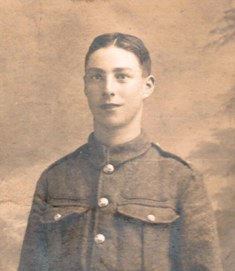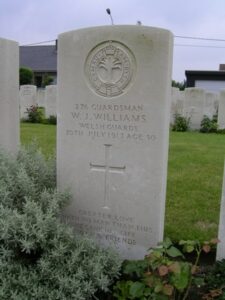Llanddowror sits two miles west of St. Clears, on the A477 road to Pembroke. It was a stopping place on the ancient Pilgrim route to St. David’s, and in more recent times was a resting place on the Drover’s route to London from Pembrokeshire. The village was the home of Griffith Jones, the father of the modern schooling system. The village Church, Eglwys Cymyn, contains a marble memorial plaque to the men of the area who fell during the Great War of 1914-1918, and also contains a memorial book, which holds details of all her sons who served.
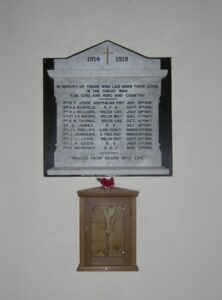
The Great War, 1914-1918
John Henry Dodd, Private, 22050, Royal Engineers. John was born at Penlan-Coed, Aberarth on 15 April 1893, the son of Charles and Anne Dodd (nee Thomas). By 1901 the family lived at the Ram Inn, Coedmore, Carmarthen, before John moved to Dan-y-Coed, Llanddowror. John joined the army on 29 August 1917 and was placed into the 68th Battalion Training Reserve, based at Ripon in Yorkshire. In December 1917 John was transferred to 635th Home Service Company, Labour Corps. The 635th Home Service Company was stationed at Larkhill from September 1917 to April 1919, and then moved to Durrington until disbanded in June 1919. They were employed as cooks, clerks, orderlies, camp staff etc. John was seconded to the Royal Engineers and was sent to France on 15 January 1918, but by the end of March, had been sent home to Plymouth Hospital suffering from Shellshock. John received treatment at Devonport and Lyme Regis Hospitals before being recalled to the Labour Corps at Salisbury Plain on 20 August 1918. At the beginning of October 1918, John was taken seriously ill with Pneumonia and was sent to Bulford Manor Convalescent Home. He recovered and rejoined his unit, but soon fell ill again, and in February 1919 he was taken to Fargo Military Hospital, and then transferred to Plymouth Military Hospital where he died after an operation on 1 July 1919, aged 26. John is buried in the Efford Cemetery in Plymouth.
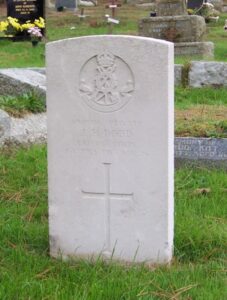
David James, Sergeant, 448350, Royal Engineers. David was born at Llanybri on 19 October 1884, the son of Thomas and Hannah James. He moved to the Smithy, Llanddowror in 1908, and married Martha Thomas, of St. Clears in 1910. David joined the 2/1st Welsh Field Company, Royal Engineers on 14 November 1914, and was promoted Farrier Sergeant on 27 September 1915. He was sent to the Dardanelles in October 1915 and from there was transferred to Egypt in December that year, when he was transferred to the 437th Field Company. He marched with the Forces from Egypt to Palestine and was present at the Battle of Gaza and other engagements. David was due to return to England in November 1917, and was returning firstly to Palestine on the Aragon when the ship was torpedoed by a submarine on 30 December 1917 and he was drowned, aged 33. David is remembered on the Alexandria (Chatby) Memorial, Egypt.
David Thomas John, Lance Corporal, 244, Australian Infantry. David was born on 2 July 1891, the eldest son of William and Eliza John, of Halfpenny Furze, Laugharne. David had a younger brother John James John, and a sister Mary Ann John who were both born in Glamorgan. Their youngest sister Sarah Jane John was born in Laugharne, in Halfpenny Furze. In 1913, David John married Lillian Evans of Laugharne, and they had a son, John William John. In 1913 David ran away from his family, and ended up in Bulli, New South Wales, where he found work as a Coalminer. On 18 August 1914, he enlisted at Randwick, NSW into the 4th Battalion, Australian Infantry, which was part of the 1st Australian Division. In October 1914 the battalion left Australia aboard the Troopship Euripides, and on 4 December disembarked at Cairo. After intensive training, the 1st Australian Division landed at Gallipoli on 25 April 1915, and took part in heavy fighting securing their beach-head at Anzac Cove. On 29 July 1915, David was temporarily transferred to duties with Brigade Engineers as a well sinker, but by 24 August 1915, David was suffering badly with fever, and was admitted to a Casualty Clearing Station, diagnosed with Pyrexia. David rejoined his Battalion on 2 January 1916, after it had evacuated from Gallipoli. On 29 March 1916, the Battalion boarded the troopship Transylvania and embarked from Alexandria to join the BEF in France, landing at Marseilles on 6 April 1916, and moving to positions in Northern France, at Fromelles. The Battle of the Somme began on 1 July 1916, and the 1st Australian Division had been moved to the Somme, where it captured the strongly defended Pozieres Ridge. On 11 August 1916 David was promoted to Lance Corporal, and his Battalion were sent back to the front line, directly opposite Mouquet Farm. At around 14.00 on 18 August 1916, David was sent out in charge of a patrol, which had been detailed to locate the German front line at Mouquet Farm, when the patrol was surprised by a German patrol. David and Private Oliver Williams were killed in the ensuing firefight. David was buried between Pozieres and Mouquet Farm, but his grave was lost during further fighting, and today he is remembered on the Villers-Brettoneux Memorial, France. He was 25 years old and had left a 3-year-old son behind, my paternal Grandfather.
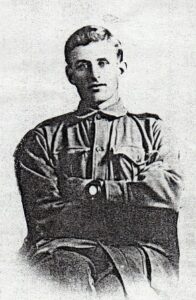
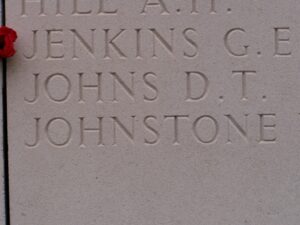
John James John, Private, 320374, Welsh Regiment. John was the younger brother of David Thomas John, and had been born on 21 May 1895 at Pontygwaith, Tyler’s Town, the youngest child of William and Eliza John. The family later returned to Laugharne, living at Halfpenny Furze. John enlisted into the Pembroke Yeomanry in 1915, and in 1916 moved to Egypt, where the Pembroke Yeomanry took part in actions against the Senussi Tribesmen. In 1917, the Pembroke and the Glamorgan Yeomanry merged and became the 24th Battalion (Pembroke & Glamorgan Yeomanry), Welsh Regiment, attached to 231 Brigade, 74th Division. After a successful campaign in Palestine, where the 74th Division took part in the capture of Jerusalem, in May 1918 the Division was sent to France, to make up the heavy losses suffered by the British during the German offensives of March and April. The 24th Welsh landed at Marseilles on 7 May 1918, and moved to Northern France. After helping to steady the line in Flanders, the Division moved to the Somme, to take part in the Battle of Epehy, which was a move towards the Hindenburg Line. John was killed in action during the 24th Welsh attack on Gillemont Farm on 21 September 1918. He is buried at Unicorn Cemetery, France, just fifteen miles from where his brother David fell.
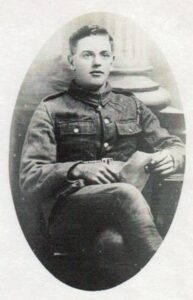
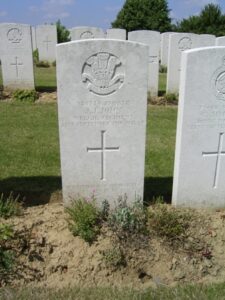
Joseph Johnson, Private, 29688, East Yorkshire Regiment. Joseph was born in London in 1889, the son of James Henry and Emma Johnson. Joseph moved to Llanddowror before the war, finding work as a Farmhand, and married Mary Phillips on 25 October 1913. He enlisted at Carmarthen on 11 March 1915, and joined the Army Service Corps as a Driver. In France, he was attached to No. 1 Section, 99th Company, 27th Reserve Park, before being posted to the 1st Battalion, East Yorkshire Regiment, who were part of 64 Brigade, 21st Division. From June to July 1916, the Battalion took part in the Battle of Albert, the opening of the Battle of the Somme. They moved to the Ypres Salient in 1917, before returning to the Somme in 1918. On 21 March 1918, the Germans launches a massive offensive on the Somme, and the 21st Division was caught up in terrible fighting. Joseph was killed in action on 31 March 1918 whilst his Battalion were fighting a fierce defensive battle against the superior numbers of the German Army. It shows how chaotic and awful the conditions were, as nothing at all had been heard of him by his family, until Christmas Day 1919. Joseph’s wife received a telegram from the War Office saying that he had been confirmed as killed. Joseph was 29 years old. His body, like so many others of that terrible time, was lost, and so Joseph is remembered on the Pozieres Memorial, France. Sadly, Joseph left two children; Oliver Henry Johnson had been born on 2 March 1915 and Joseph Randall Johnson born on 20 July 1917. Joseph’s bereaved widow Mary died on 10 February 1920 after a short illness, leaving the two boys orphaned.
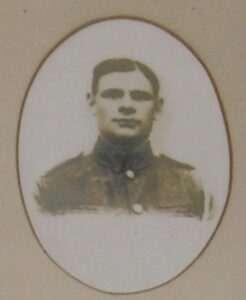
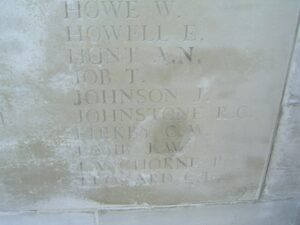
John Lewis Phillips, Private, 25631, Lancashire Fusiliers. John was born at the Post Office, Llanddowror on 15 May 1897, and received his education at the Church School. On his nineteenth birthday, 15 May 1916, he joined the Royal Field Artillery as a Driver. In July 1916 he was transferred to the army, and went out to France on 20 December 1916, to join the 11th Battalion, Lancashire Fusiliers, which was attached to 74 Brigade, 25th Division. John took part in the Battle of Arras in March 1917, then fought at Messines in April 1917. The Division fought at the Third Battle of Ypres, and then took part in the Battle of Cambrai later that year. In the spring of 1918 the Division was near St. Quentin. They were hit here by the German offensive of 21 March 1918. John was serving as a machine gunner, and his gun had jammed, due to the attempt to stem the German assault. John was trying to repair his Lewis Gun, when he was hit in the temple by a bullet, in the morning of 23 March 1918, and was killed instantly. His body was lost on the battlefield, and so he is remembered on the Arras Memorial, France.
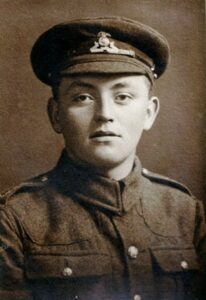
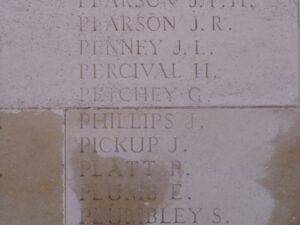
Owen Richards, Private, M/416802, Royal Army Service Corps. Owen was born at Craig-y-Deilo, Llanddowror on 22 May 1890, the son of David and Elizabeth Richards, and was educated there at the Church School. He married Eleanor Lawford in 1916, and the couple lived with their daughter Elizabeth, at Glasfryn House, Pembrey. Owen joined the Motor Transport branch of the Army Service Corps on 4 November 1918, and was drafted to Woolwich Dockyard. Owen was, however, taken ill with influenza and bronchial pneumonia a few days after he joined up and died at the Davidson Road War Hospital, Croydon on 22 November 1918. Owen was 28 years old, and was brought to Pembrey, where he was buried at Bethel Calvinistic Methodist Churchyard at Pembrey on 29 November 1918.
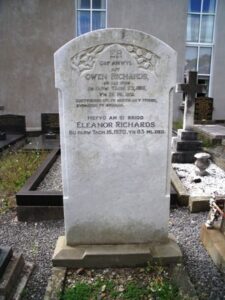
Henry Albert Richfield, Bombardier, 13635, Royal Field Artillery. Henry was born at York Street, Greenwich West on 4 July 1892, the son of William and Elizabeth Richfield. He came to work in Llanddowror as a Farm Servant about 1909. He joined the forces in August 1914 as Gunner and went to France in the summer of 1915, attached to C Battery, 74 Brigade, Royal Field Artillery, which was attached to the Guards Division. Henry took part in the Battle of Loos on 25 September 1915. The Division remained here over the winter, and in the summer of 1916 moved south to the Somme. Henry was killed during the Battle of Flers-Courcelette, on 9 September 1916. He was 24 years old, and is buried at Flatiron Copse Cemetery, Mametz, France. (The Llanddowror Memorial book gives his date of birth as 4 May 1889, but other records do not concur).
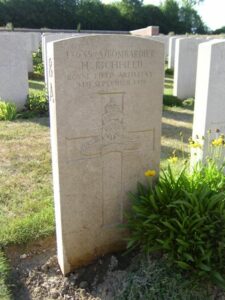
Benjamin Watts Thomas, Private, 2494, Welsh Guards. Benjamin was born at Penygraig, Llanddowror on 25 September 1894, the son of George and Mary Thomas, and received his education at the Church School. He joined the forces on 20 January 1915, and was attached to the Welsh Guards, which was raised on 26 February 1915. Before he was drafted to France he was for a time at Caterham, then at Tadworth Camp, Surrey, with the 5th Company Welsh Guards. In France he was attached to Prince of Wales Company, the 1st Battalion Welsh Guards, which was attached to 3rd Guards Brigade, Guards Division. Benjamin took part in the Battle of Loos. In November 1915 he was wounded in the thigh by a piece of shrapnel and was treated at the Red Cross Hospital, at Portishead, Somerset. He returned to action, and on 11 October 1917, whilst taking part in an engagement at Houthulst Forest, near Ypres he was seriously wounded in both arms and in the back. After treatment at the Field Hospital he was brought over to Highfield Military Hospital, Liverpool, where he died on 16 October 1917. Benjamin was buried in Llanddowror Churchyard on 21 October 1917. He was 23 years old.
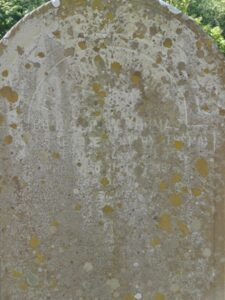
Thomas Rees Waters, Lance Corporal, 44078, Welsh Regiment. Thomas was born on 4 October 1884, the son of John and Martha Waters, of Penrhiw, New Mill, Laugharne. Thomas enlisted into the army, and was posted to France during the summer of 1916 where he joined the 16th (Service) Battalion, Welsh Regiment, which was the Cardiff City Battalion, attached to 115 Brigade, 38th (Welsh) Division. The Division had been in France since December 1915, and had been posted to the Fleurbaix Sector for training. Thomas was drafted into France in April 1916, as part of the build up to the Battle of the Somme. It was in France that he joined ‘C’ Company of the 16th Welsh. Thomas was promoted to Lance Corporal in June 1916, and fought through the carnage of Mametz Wood, when the 16th Welsh was decimated during a futile attack on Mametz Wood on 7 July 1916. After the severe mauling that the 38th Welsh Division suffered at Mametz, they were withdrawn from front line service to rebuild and recover their immense losses. They then had the misfortune to be posted to the Ypres Salient, where they played a big part in the actions at Boesinghe and the Pilckem Ridge, during the Third Battle of Ypres, which is better known today as ‘Passchendaele’. After the Welsh Divisions successful capture of the Pilckem Ridge, the Division was withdrawn to rest areas, leaving the 15th and 16th Welsh behind to assist the 20th (Light) Division in an attack on Langemarck. Thomas was killed in action during a suicidal attempt to attack the German lines at Langemarck through a barrage on 27 August 1917. His body was never recovered, due to the terrible conditions of the Battlefield, and so he is commemorated on the walls of the massive Tyne Cot Memorial, Belgium.
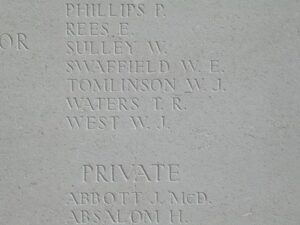
William John Williams, Private, 276, Welsh Guards. William was born at Mardy, Glamorgan on 13 April 1887, the son of Samuel and Margaret Williams. The family moved to Llanddowror, his father’s native village, where they lived at Old Cross Inn. William joined the Grenadier Guards on 30 September 1914, and was transferred to the Welsh Guards on its formation on 26 February 1915. He was drafted to France in August 1915 and took part in the Battle of Loos on 25 September 1915, being wounded at Loos early in 1916. He also fought with the Welsh Guards on the Somme and Ancre in 1916, and at Arras, Messines, Passchendaele and Langemark in 1917. William was killed in action just prior to the Battle of Pilckem Ridge, on 30 July 1917, when a German shell struck the Welsh Guards positions near Poelcapelle. William was buried at Duhallow A.D.S. Cemetery, Belgium. He was 30 years old.
